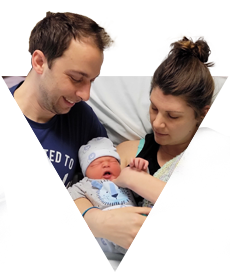Sarah Derocha had made many Christian medical missions trips to remote areas of Bolivia. The nurse practitioner felt at home thousands of miles from her native Illinois. But in 2014, at just 26 years of age and traveling with other missionaries to Salar de Uyuni, the largest salt flat in the world, her life changed forever.
Extreme weather conditions, coupled with the altitude, made for treacherous driving. Late one afternoon, while riding on a bus with 44 colleagues, they were struck head-on by an SUV. The bus lost control, flipping on its side, pinning Derocha’s left hand underneath the full weight of the vehicle. She’d been scalped in the accident and was bleeding from her head. Her radial artery, which supplies blood to the forearm, had been severed. The scene was chaotic and person after person tried and failed to help her. An hour passed, her adrenaline the only thing keeping the pain from devouring her.
Sarah was certain she would die there in Bolivia.
The thinner air exacerbated Derocha’s deteriorating condition. It was difficult to breathe. The indigenous people she traveled with tried to keep her comfortable, tried to figure out how to free her and make contact with someone in the nearest town, two hours away. Though in a terrifying situation, her faith kept her awake and determined to survive. Derocha prayed, “If this is my time, you have to give me strength to get out.” “It was hopeless,” she added.
Her training as a trauma nurse saved her life. She had a little medical bag with her and was able to grab Tylenol to chew on. From her position on the ground, and in respiratory distress, she called out as loudly as she could. She asked people to give her their belts or scarves to make a series of tourniquets, all of which quickly bloomed red with blood. Finally, a young girl came to her with a spoon, trying to dig a hole underneath her hand to free it. Sarah took the spoon and managed to dig herself out and crawl up through the upside-down emergency exit.
Finally, through a series of phone calls to the United States Embassy in Bolivia, communication in multiple languages and more than a few strokes of luck, a rickety ambulance came and took her on the excruciating two-hour journey to the nearest hospital. She recalls the facility being shockingly primitive. Arriving there did not boost her hopes of survival. “I was trying to tell them I needed antibiotics or I was going to die. I told them I had to have oxygen, and requested fluids.” As the medical staff did their best to understand her and give her what she needed, her colleagues were frantically trying to get her on a flight out to the nearest major city, La Paz, for more extensive care. Luckily, the little hospital had a CT scanner, and her scan showed no evidence of brain injury, which would have precluded her from a transfer.
Through the missionaries’ connections with the Bolivian Air Force, she was flown to a hospital in La Paz, arriving 10 hours after the initial collision. “Once my hand was free, the pain came. And it never went away, and no one gave me pain medication until I was settled in the hospital.” Derocha spent five nights there, receiving basic care before she could get evacuated to the US.
That leg of the journey was equally difficult. She had to take three commercial flights to get home. Her family and two physician friends who were also missionaries welcomed her at Chicago’s O’Hare International Airport. At this point, she knew that time was paramount to staving off infection and any further damage. “I just wanted to get to the University of Chicago Medical Center the fastest way possible, so I told my friends to throw me in the back of their Honda. I knew it would be faster than any ambulance,” she recalls.









